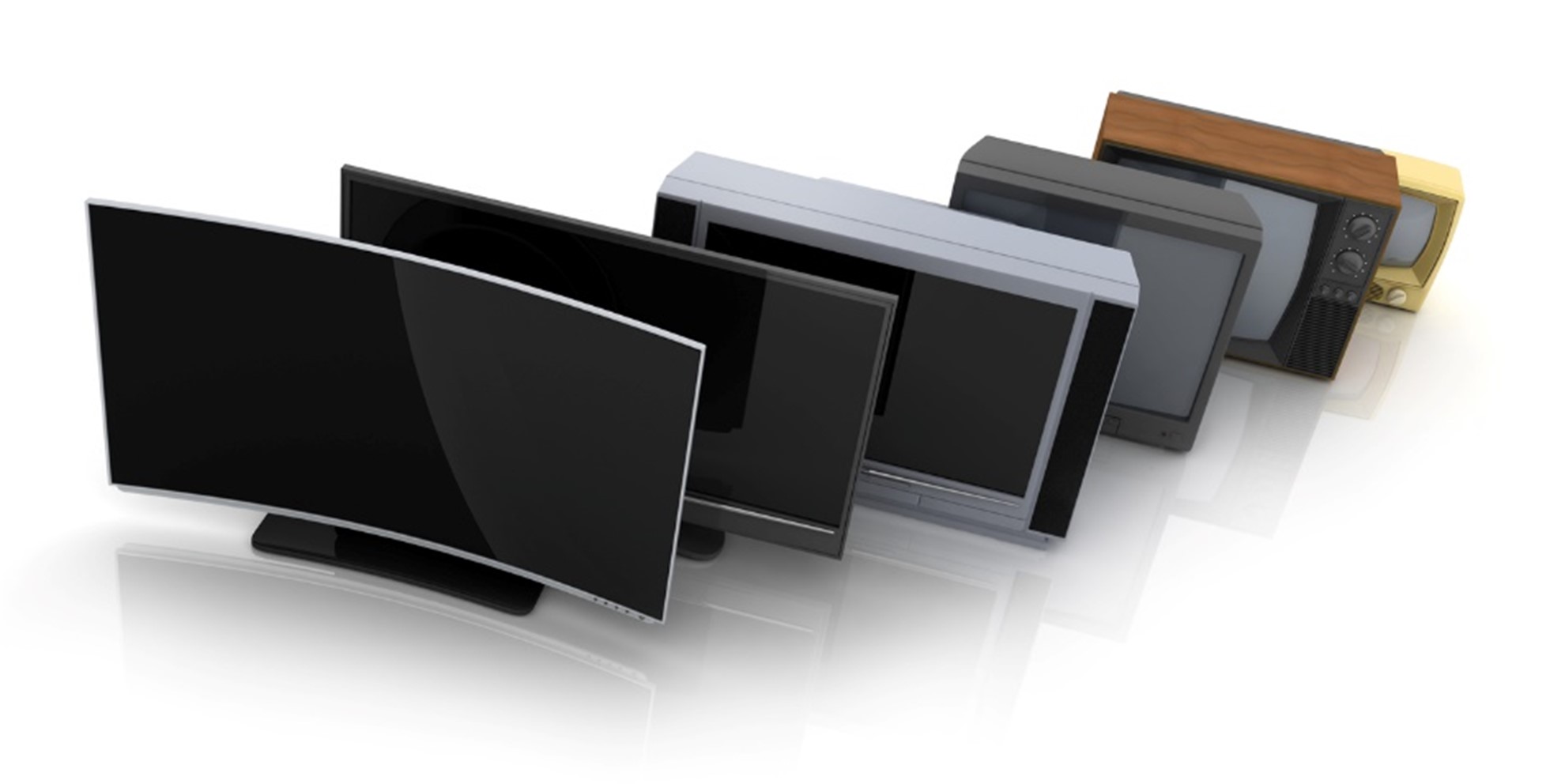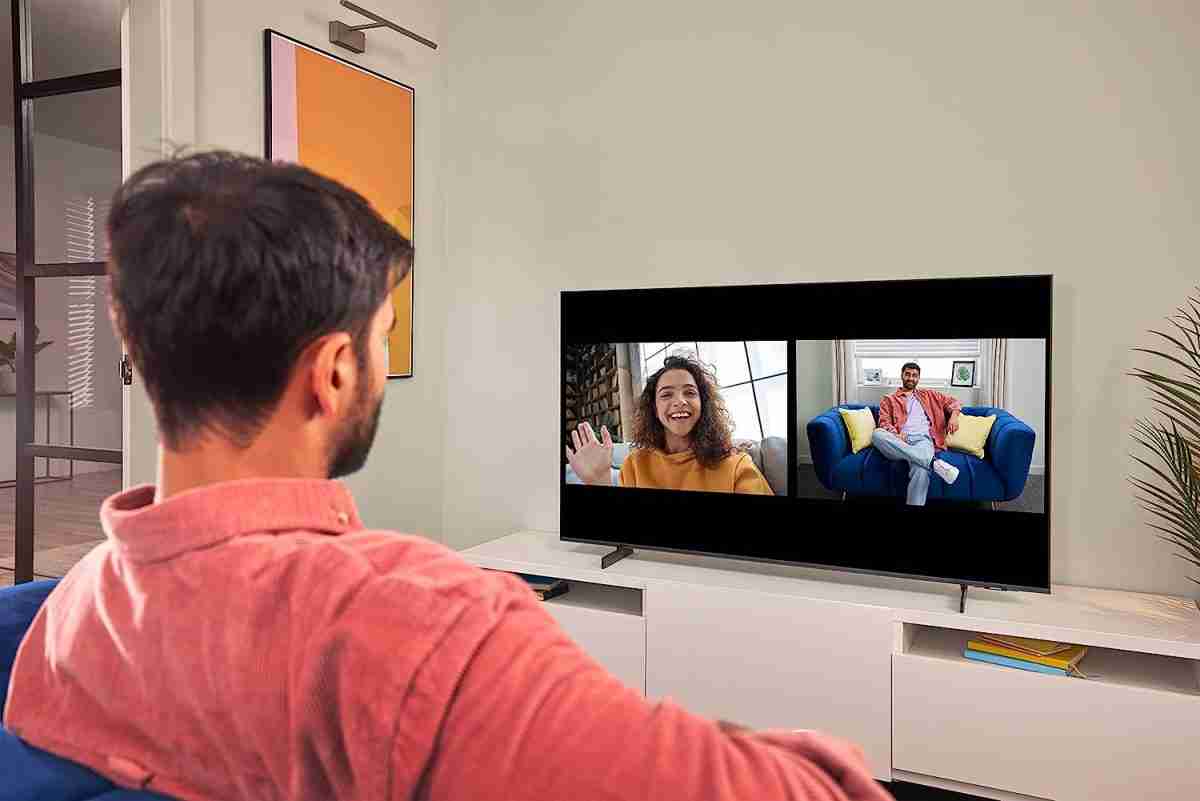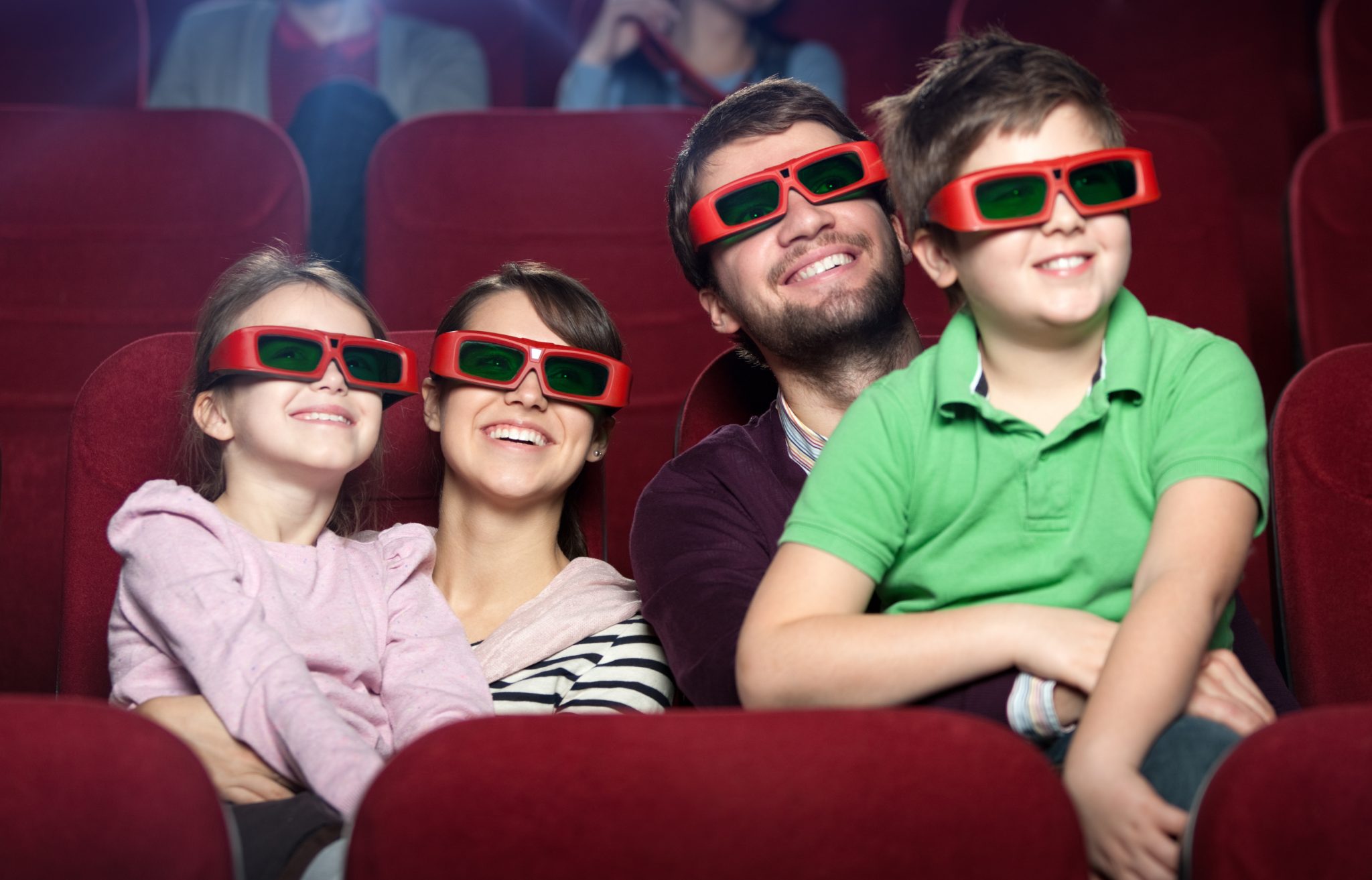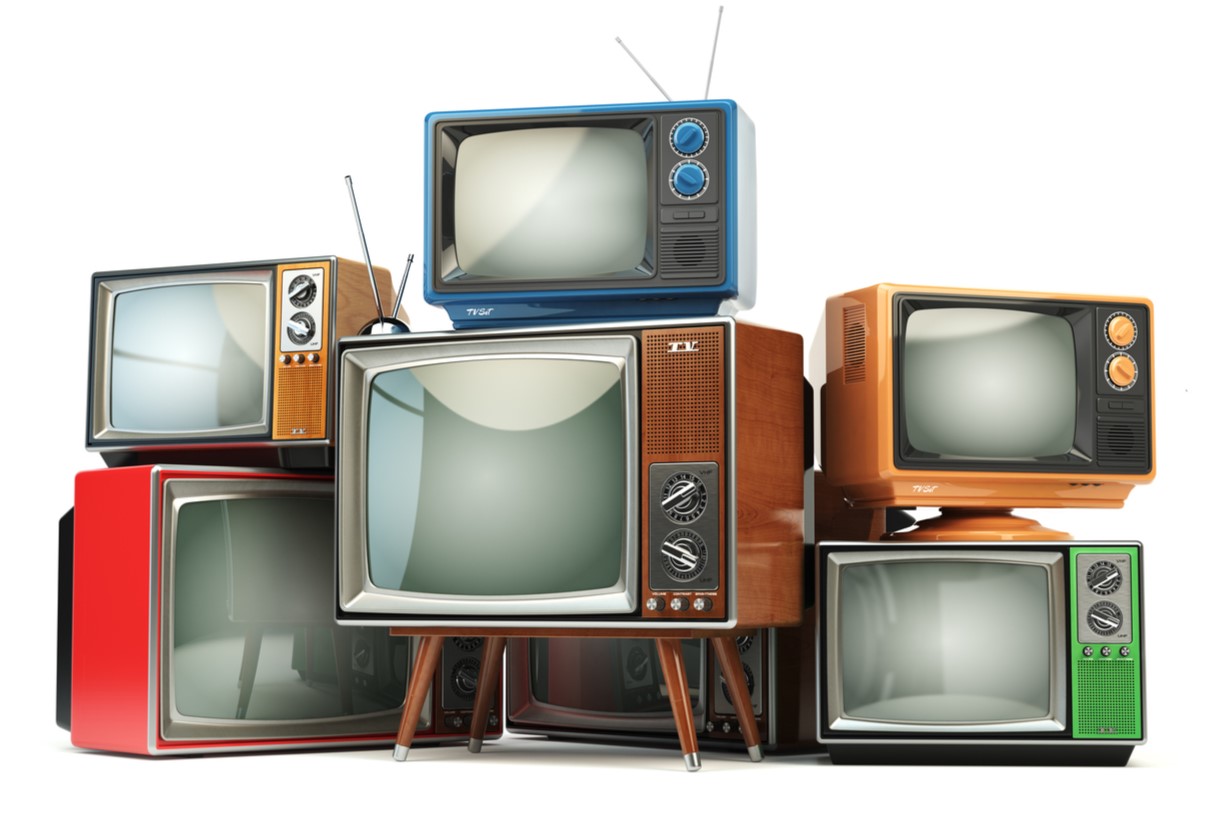Home>Technology>Home Entertainment Systems>How Has Digital Technology Changed Television? Why Is It An Improvement?


Home Entertainment Systems
How Has Digital Technology Changed Television? Why Is It An Improvement?
Modified: October 28, 2024
Discover the impact of digital technology on television and how it has revolutionized home entertainment systems, offering an unparalleled viewing experience and improved convenience. Explore the benefits today!
(Many of the links in this article redirect to a specific reviewed product. Your purchase of these products through affiliate links helps to generate commission for Storables.com, at no extra cost. Learn more)
Introduction
The advent of digital technology has revolutionized many aspects of our lives, and television is no exception. Gone are the days of bulky, CRT television sets with limited channels and subpar picture quality. Today, we are living in an era where home entertainment systems have been completely transformed, providing us with a truly immersive and interactive viewing experience.
Digital technology has not only improved the way we consume television content but has also made it more accessible, convenient, and efficient. In this article, we will explore how digital technology has changed television and why it is considered a significant improvement.
From the shift to digital television to enhanced viewing experiences, increased accessibility, interactive features, advanced advertising strategies, and cost savings, we will dive deep into the various advantages of the digital era of television.
Key Takeaways:
- Digital technology has revolutionized television, delivering superior picture and sound quality, expanded content accessibility, interactive features, and advanced advertising strategies, transforming home entertainment into an immersive and efficient experience.
- The shift to digital television has not only enhanced the viewing experience but also brought about cost savings and increased operational efficiency, optimizing resource utilization and streamlining production and distribution processes.
Read more: How Has Binge-Watching Changed Television?
The Shift to Digital Television
In the past, television broadcasts used analog signals, which were susceptible to interference and often resulted in grainy picture quality and poor sound. However, the shift to digital television has completely transformed the way we watch our favorite shows and movies.
Digital television uses binary code, which allows for the transmission of data in a more efficient and reliable manner. This means that viewers can enjoy crystal-clear pictures, vibrant colors, and immersive sound that rival the quality of a cinematic experience.
One of the key advantages of digital television is its ability to transmit more channels through the same bandwidth. This has led to an increase in the number of available channels, giving viewers a wider range of options to choose from. Whether you’re a sports enthusiast, a movie buff, or a fan of documentary programs, digital television offers an extensive selection of content catering to diverse interests.
Another significant aspect of the shift to digital television is the introduction of high-definition (HD) and ultra-high-definition (UHD) formats. These formats provide even greater picture clarity and detail, allowing viewers to experience their favorite programs with stunning realism. With the advent of technologies like 4K and HDR, viewers can now enjoy television content with exceptional visual fidelity, bringing them closer to the action and enhancing their overall viewing experience.
Moreover, digital television has paved the way for new features such as electronic program guides (EPGs). EPGs provide users with detailed information about current and upcoming programs, allowing them to plan their viewing schedule in advance. Additionally, features like video on demand (VOD) have become widespread, enabling viewers to access a vast library of movies and shows at their convenience, whenever and wherever they want.
The shift to digital television has also played a crucial role in the discontinuation of analog television signals in many countries. This has resulted in a more efficient use of bandwidth and has opened up opportunities for other applications, such as wireless internet services, to utilize the freed-up spectrum.
All in all, the shift to digital television has significantly improved the quality, variety, and convenience of our viewing experience. The advancements in technology have brought us closer to the content we love, allowing us to enjoy television in ways we never thought possible.
Enhanced Viewing Experience
Digital technology has transformed the way we experience television, taking the traditional viewing experience to new heights. With the advancements in display technology, sound systems, and interactive features, the viewing experience has become more immersive, engaging, and enjoyable.
One of the significant advancements in the digital era is the introduction of flat-panel television displays, such as LED, LCD, and OLED. These displays offer sharper, brighter, and more vibrant images compared to their analog counterparts. With deeper black levels and wider color gamuts, viewers can now see every detail with stunning clarity and realism.
Furthermore, the adoption of surround sound systems has revolutionized the audio experience of television. Dolby Atmos and other advanced audio technologies create a three-dimensional soundscape, making viewers feel like they are right in the middle of the action. The combination of immersive visuals and enveloping sound creates a truly cinematic experience within the comfort of our own homes.
Moreover, digital television has given rise to innovative features that enhance the viewing experience. Smart TVs, for example, allow users to access a range of online streaming services directly from their television sets. This means that viewers can easily switch between their favorite shows, movies, and even live sports events without the need for additional devices.
Streaming services like Netflix, Amazon Prime Video, and Hulu provide a wealth of content options, allowing viewers to personalize their viewing experience and discover new shows and movies from around the world. The ability to binge-watch entire seasons of TV shows, create personalized watchlists, and receive recommendations based on viewing habits has made the television experience more convenient and tailored to individual preferences.
Additionally, the rise of interactive features has brought a new dimension to the viewing experience. Many digital TVs now come with interactive menus and applications, allowing viewers to engage with content in unique ways. They can participate in live polls, access behind-the-scenes content, explore additional information about shows and characters, and even interact with other viewers through social media platforms.
Overall, the enhanced viewing experience offered by digital technology has transformed television from a passive activity into an interactive and immersive form of entertainment. With stunning visuals, immersive audio, and innovative features, viewers can indulge in a truly captivating and enjoyable television experience like never before.
Increased Accessibility
One of the significant advantages of digital technology in the realm of television is the increased accessibility it provides to a wider range of viewers. Digital television has broken down barriers and made it easier for people to access and enjoy their favorite shows and content.
Prior to the digital era, television broadcasts were often limited to a few local channels, and viewers had to rely on external antennas to receive a clear signal. However, with the transition to digital television, the number of available channels has significantly increased. This means that viewers now have access to a more diverse range of content, including local, national, and international channels.
Furthermore, digital technology has made television accessible to viewers in remote and rural areas. Digital signals can be transmitted over longer distances without significant degradation in quality, allowing viewers in remote locations to receive crisp and clear TV broadcasts. This has bridged the gap between urban and rural communities, ensuring that everyone has equal access to television programming.
Another aspect of increased accessibility is the availability of closed captioning and audio description options. Digital television makes it easier for broadcasters to provide these accessibility features, enhancing the viewing experience for individuals with hearing or visual impairments. Closed captioning provides text information for dialogue, sound effects, and other audio elements, allowing viewers to follow along even if they can’t hear the audio. Audio description, on the other hand, provides additional verbal narration that describes important visual elements for viewers with visual impairments.
Moreover, digital television has improved the accessibility of content through on-demand services and streaming platforms. Viewers can now access their favorite shows and movies at any time and from anywhere, as long as they have an internet connection. Streaming services have made it possible to watch content on various devices, including smartphones, tablets, and laptops, further increasing accessibility and convenience.
Additionally, digital technology has enabled the creation of specialized channels and programming that cater to specific interests and communities. From educational channels to language-specific channels to channels dedicated to niche hobbies, viewers can now find content that aligns with their unique preferences and interests. This has further increased the accessibility of television by ensuring that viewers have access to content that resonates with them on a personal level.
Overall, the increased accessibility provided by digital technology has opened up new opportunities for viewers to connect with television programming. It has expanded the viewing options, made television accessible to remote areas, empowered individuals with disabilities to enjoy content, and personalized the television experience for everyone.
Digital technology has revolutionized television by providing higher picture and sound quality, on-demand viewing options, interactive features, and the ability to access content on multiple devices. This has improved the overall viewing experience for audiences.
Interactive Features
One of the most exciting advancements in the digital era of television is the integration of interactive features, which take the viewing experience to a whole new level. These features allow viewers to actively engage with the content and participate in a more immersive and interactive television experience.
Interactive features can range from simple viewer polls and quizzes to more complex interactive storytelling experiences. Many digital TVs now offer built-in interactive menus and applications that allow viewers to access additional content and features related to the show or movie they are watching.
For example, viewers can use their remote controls or mobile devices to participate in live polls and quizzes during reality TV shows or game shows. This not only adds an element of fun and engagement but also allows viewers to feel more connected to the content and have a sense of involvement in the outcome.
Beyond polls and quizzes, interactive features can also provide viewers with additional information about the show, characters, and behind-the-scenes content. Viewers can access actor bios, explore episode summaries, and even watch extra footage that may not have been included in the broadcast. This deeper level of engagement allows viewers to immerse themselves in the world of the show and gain a deeper understanding of the narrative and characters.
Another exciting development in interactive television is the concept of choose-your-own-adventure storytelling. Streaming platforms like Netflix have introduced interactive programming where viewers can make choices that affect the outcome of the story. This interactive storytelling format allows viewers to have a personalized viewing experience and feel like active participants in the narrative.
Besides interactive storytelling, social media integration has also played a significant role in enhancing the interactive television experience. Viewers can now connect their television accounts with their social media profiles, allowing them to share their favorite moments, discuss episodes with friends, and even participate in live tweet sessions organized by the show’s creators or cast members. This integration creates a sense of community and engagement among viewers, fostering a deeper connection to the content and enhancing the overall viewing experience.
Moreover, digital technology has made it easier for viewers to engage with television content beyond the traditional broadcast. Smart TVs and streaming devices enable viewers to access online forums, discussion boards, and fan communities dedicated to their favorite shows. These platforms facilitate discussions, debates, and theories surrounding the content, fostering a sense of belonging and allowing viewers to become more invested in the shows they love.
Overall, interactive features have transformed television from a passive viewing experience to an interactive and engaging form of entertainment. Viewers now have the ability to actively participate, explore additional content, and connect with fellow fans, making television-watching a more immersive and interactive experience.
Read more: How Television Changed The World
Advanced Advertising Strategies
With the rise of digital television, advertising strategies have also evolved to adapt to this new era of content consumption. Digital technology has paved the way for advanced advertising strategies that provide advertisers with more targeted and personalized approaches to reach their desired audience.
One of the key advantages of digital television advertising is the ability to collect and analyze data about viewers. With the use of smart TVs and streaming platforms, advertisers can gather valuable insights about viewers’ demographics, interests, and viewing habits. This data allows advertisers to deliver advertisements that are more relevant and tailored to individual viewers, increasing the chances of engagement and conversion.
Moreover, digital television advertising opens up new opportunities for dynamic and interactive advertising formats. Advertisers can leverage the interactive features of digital platforms to create engaging and immersive advertisements that capture viewers’ attention and encourage interaction. For example, viewers might be able to interact with an advertisement by playing a game, taking a poll, or exploring additional information about the product or service being advertised.
Another advantage of digital television advertising is the flexibility and efficiency it offers. Advertisements can be targeted to specific geographic locations, allowing advertisers to reach their intended audience in a more precise and cost-effective manner. Additionally, digital platforms provide the ability to schedule advertisements at specific times or during specific programs when the target audience is more likely to be engaged, maximizing the impact of the advertisement.
Furthermore, digital television advertising allows for real-time tracking and measurement of advertisement performance. Advertisers can receive immediate feedback on the effectiveness of their campaigns, allowing them to make data-driven decisions and optimize their strategies accordingly. This level of transparency and analytics helps advertisers to maximize the return on their investment and refine their targeting for future campaigns.
Additionally, the rise of programmatic advertising has revolutionized the way advertisements are bought and sold in the digital television space. Programmatic advertising uses automated systems and algorithms to match advertisements with the most relevant viewers in real-time. This allows advertisers to efficiently reach their target audience and ensures that advertisements are delivered in the most effective context.
Overall, digital technology has ushered in a new era of advanced advertising strategies in the television industry. With greater data insights, interactive formats, precise targeting, and real-time tracking, advertisers have the tools to create more engaging and effective campaigns, delivering advertisements that resonate with viewers and drive results.
Cost Savings and Efficiency
Digital technology has not only improved the quality and experience of television but has also brought about significant cost savings and increased efficiency in various aspects of the industry.
Firstly, the transition to digital television has resulted in improved efficiency in the use of broadcasting resources. Digital signals can be compressed and transmitted using less bandwidth compared to analog signals. This means that broadcasters can transmit more channels and content using the same amount of spectrum. It allows them to maximize the utilization of available resources, leading to cost savings and increased broadcasting efficiency.
In addition to bandwidth efficiency, digital television has also brought about significant cost savings in the production and distribution of content. Digital cameras and editing equipment have replaced traditional film-based equipment, making production processes more streamlined and cost-effective. With digital technology, content creators can shoot, edit, and deliver content with greater speed and efficiency, reducing production costs and turnaround times.
Digital technology has also revolutionized content distribution, eliminating the need for physical distribution methods like tapes or discs. Content can now be delivered digitally to broadcast stations or streaming platforms, cutting down on production and distribution costs. Furthermore, viewers can access content on-demand through streaming services, eliminating the need for physical media and reducing production and distribution expenses for content providers.
Moving to digital television has also opened up opportunities for targeted advertising, leading to more effective and efficient marketing campaigns. With the use of data analytics, advertisers can better understand their target audience and deliver personalized advertisements. This targeted advertising approach maximizes the efficiency of advertising spend by reaching the right viewers at the right time, optimizing return on investment (ROI) for advertisers.
Moreover, the adoption of digital technology has led to advancements in automation and workflow optimization in the television industry. Automation tools and software streamline various processes, from content scheduling to ad insertion, reducing the need for manual intervention and minimizing human error. This automation not only saves time and resources but also ensures a smoother and more efficient operation of television networks and streaming platforms.
Furthermore, digital technology has facilitated the development of cloud-based storage and streaming solutions. Content can be securely stored and accessed from the cloud, eliminating the need for physical storage infrastructure. This cloud-based approach reduces costs associated with hardware maintenance and increases scalability and flexibility in content management.
Overall, digital technology has brought about cost savings and increased efficiency in the television industry. From optimized resource utilization to streamlined production and distribution processes, targeted advertising, automation, and cloud-based solutions, digital television has transformed the industry, making it more cost-effective and efficient in delivering high-quality content to viewers worldwide.
Conclusion
The advent of digital technology has revolutionized the television industry, bringing about significant improvements in various aspects of the viewing experience. From enhanced picture and sound quality to increased accessibility, interactive features, advanced advertising strategies, and cost savings, digital television has transformed home entertainment systems into immersive and efficient platforms.
The shift to digital television has not only delivered superior picture and sound quality but has also expanded the range of available channels, offering viewers a wider selection of content. The introduction of high-definition and ultra-high-definition formats has further enriched the viewing experience, providing stunning visuals that rival the quality of a cinematic presentation.
Digital technology has made television more accessible to viewers in remote areas, ensuring that everyone can enjoy their favorite shows regardless of location. Accessibility features such as closed captioning and audio description options have improved the television experience for individuals with hearing or visual impairments.
The integration of interactive features has transformed television into a more engaging and participatory experience. From polls, quizzes, and behind-the-scenes content to choose-your-own-adventure storytelling and social media integration, viewers can actively engage with the content and connect with fellow fans, fostering a sense of community around their favorite shows.
Advanced advertising strategies enabled by digital technology have allowed advertisers to target their intended audience more precisely, creating personalized and interactive advertisements that resonate with viewers. The shift to programmatic advertising has increased efficiency in ad delivery and measurement, optimizing the return on investment for advertisers.
Not only has digital television improved the viewing experience, but it has also brought about cost savings and efficiencies in the industry. From efficient use of broadcasting resources to streamlined production and distribution processes, digital technology has reduced costs and increased operational efficiency. The automation of various tasks and the adoption of cloud-based solutions have further enhanced workflow optimization and scalability.
In conclusion, digital technology has transformed home entertainment systems, offering viewers a truly immersive, accessible, and interactive television experience. With superior picture quality, interactive features, targeted advertising, and increased cost savings, digital television has ushered in a new era of entertainment that continues to evolve and shape the future of the industry.
Frequently Asked Questions about How Has Digital Technology Changed Television? Why Is It An Improvement?
Was this page helpful?
At Storables.com, we guarantee accurate and reliable information. Our content, validated by Expert Board Contributors, is crafted following stringent Editorial Policies. We're committed to providing you with well-researched, expert-backed insights for all your informational needs.















0 thoughts on “How Has Digital Technology Changed Television? Why Is It An Improvement?”